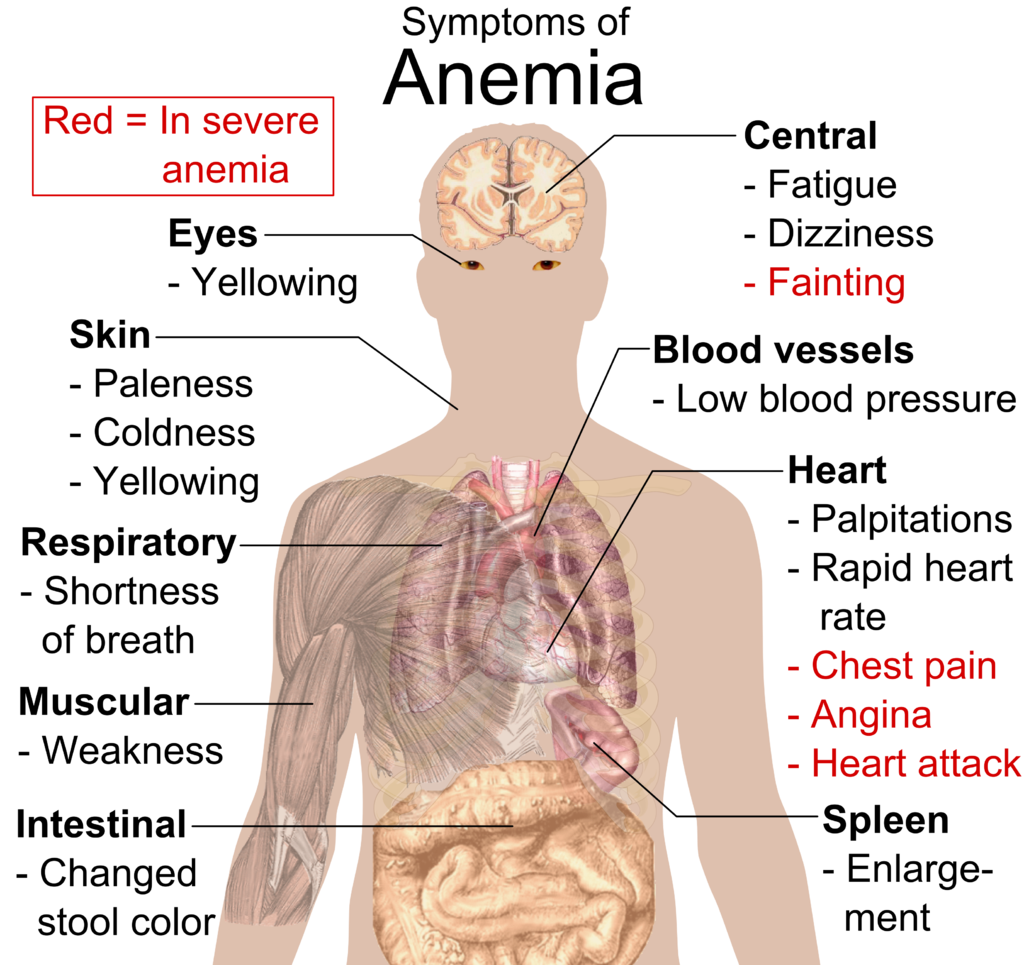- April 3, 2024
What is Anemia
 Häggström, Mikael (2014). "Medical gallery of Mikael Häggström 2014"
Häggström, Mikael (2014). "Medical gallery of Mikael Häggström 2014"
Anemia occurs when there aren’t enough healthy red blood cells to carry oxygen to your body’s organs. As a result, it’s common to feel cold and have symptoms of tiredness or weakness. There are many different types of anemia, but the most common type is iron-deficiency anemia. You can begin to ease symptoms of this type of anemia by adding iron to your diet.
How common is this condition?
Anemia is very common, affecting an estimated one-third of the global population and an estimated 3 million people in the United States.
Symptoms and Causes
What are the symptoms of anemia?
Fatigue — feeling too tired to manage your activities — is the most noticeable anemia symptom. Other symptoms may include:
- Shortness of breath (dyspnea): This is the feeling you can’t catch your breath or take a deep breath.
- Dizziness: This is feeling lightheaded or unsteady on your feet.
- Fast or irregular heartbeat (arrhythmia): This is when your heart feels like it’s racing or skipping beats.
- Pounding or “whooshing” sound in your ear (pulsatile tinnitus): This is a swooshing sound in one of your ears that may come and go.
- Headache: Iron-deficiency anemia and anemias caused by low hemoglobin may cause headaches.
- Pale or yellow skin: Your skin color may be paler than usual.
- Chest pain: This may feel like something is pressing on or squeezing your chest.
What is the main cause of anemia?
People may be born with certain types of anemia or develop anemia because they have certain chronic diseases. But poor diet causes iron-deficiency anemia, which is the most common form of anemia.
Diagnosis and Tests
How do healthcare providers diagnose anemia?
Your healthcare provider will ask questions about your symptoms. As anemia happens when you don’t have enough healthy red blood cells, they’ll do blood tests to check on your red blood cells:
- Complete blood count (CBC): Healthcare providers use this test to check on all of your blood cells, with a focus on your red blood cells. They count your red blood cells and evaluate your red blood cells’ size and shape. Healthcare providers may use this test to check on your vitamin B12 or B9 levels.
- Peripheral blood smear: Healthcare providers examine your red blood cells under a microscope.
Management and Treatment
How do healthcare providers treat anemia?
First, your healthcare provider will determine if you have anemia caused by a poor diet or a more serious health problem. They may refer you to a hematologist, a healthcare provider who specializes in blood disorders. Here are some examples of common anemia treatments:
- Healthcare providers may recommend changing your diet or taking supplements if you have iron-deficiency anemia or pernicious anemia.
- If you have anemia because you have a chronic disease, your provider will treat the underlying condition. They may prescribe medication to boost red blood cell production.
Providers may use medications like immunosuppressants or treatments like blood transfusions to treat anemias that happen when you have abnormal red blood cells, like aplastic anemia or hemolytic anemia.
Prevention
Can I prevent developing anemia?
You can’t prevent some kinds of anemia, such as sickle cell anemia, hemolytic anemia or aplastic anemia. People with chronic diseases who may develop anemia should watch for anemia symptoms. And you can prevent nutritional anemias by eating a healthy diet.

